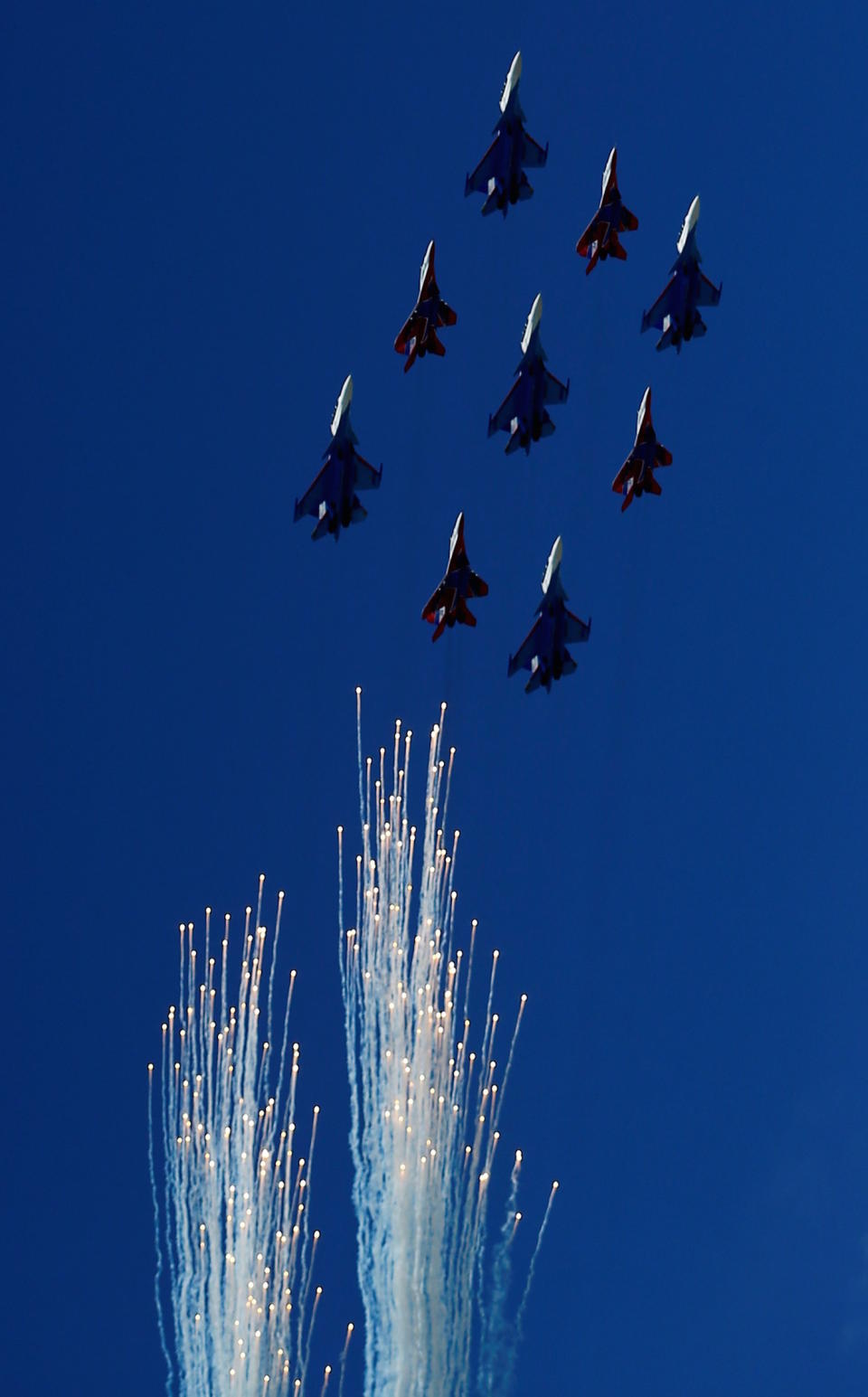What Does the Intercept of a U.S. B-52 Bomber Tell Us About Russia?

Somedays, our good friends at the Kremlin branch of the Alt-Right Propaganda Machine formerly known as Russia Today tell us more than I suspect their bosses would really like us to know. Or perhaps they have just gotten so used to putting anything and everything out there that they no longer even realize they are accidentally dropping useful intel about their own nation into the public domain.
Today is a perfect example. A few hours ago, RT published a story about the interception of an American bomber by a Russian fighter plane in international airspace over the Baltic, somewhere "close" to Russian territory. It's already a trending topic on Facebook.

Now, what is interesting in this story is not the act of the intercept. Nor is our "freedom of flight" for a B-52 mission through international airspace near the coastlines of our allies in the Baltic Sea particularly unique. Both of those are, as I've noted before, "business as usual." That is why I do not get all that excited when we conduct an interception of a Russian plane in the vicinity of our own coasts, or some of their planes fly near one of our ships at sea.
No, what is interesting in this story is the fact that only one Russian SU-27 jet fighter (pretty much like our F-15 Eagle) allegedly made the intercept. This detail leapt off the page for me, and probably for a bunch of our spooks as well.
Here's the thing: Jet fighters never, ever, fly solo. They always operate in pairs. It is a fundamental element of air combat-or being prepared for air combat. No modern and capable military force violates this cardinal rule if at all possible. But there it is, right there in the electrons handily provided to us by RT.com. Only one plane made that intercept, but why?
Two possibilities immediately arise.
The first, and the more likely, is that a maintenance issue grounded the second fighter. But that in turn means that the pre-flight checks for the "ready" aircraft were incorrectly done, or alternatively, that their "readiness" levels are, in fact, abysmal.
Second, it also might suggest that the Russians do not have the ability, even on their own border, to maintain four aircraft on "strip alert," even in an area of heightened tensions. That could be maintenance-related, or it could be an issue of pilot availability.
Either way you slice it, it doesn't speak well for the Russians' capabilities, regardless of their propaganda.
This post has been updated to reflect that the Russian fighter is an SU-27, not an SU-25. We regret the error.
As always, Robert Bateman can be reached at R_Bateman_LTC@hotmail.com, or at @RobertLBateman on Twitter.
Respond to this post on the Esquire Politics Facebook page.
You Might Also Like

